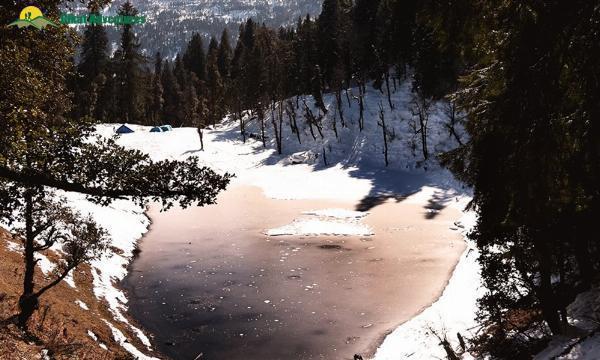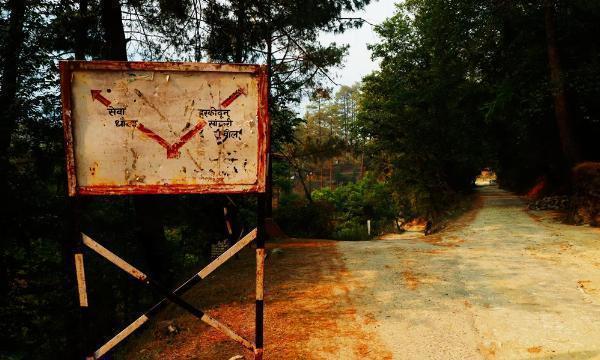Nag Tibba Trek: A Comprehensive Guide to Exploring the Serpent's Peak

Nag Tibba, or the "Serpent’s Peak," is a celebrated trekking destination in Uttarakhand, India, popular among beginners due to its accessible trails and breathtaking scenery. This 3,022-meter peak, nestled in the Garhwal Himalayas, offers trekkers a serene retreat complete with views of snow-capped mountains, lush forests, and cultural landmarks. Here’s a detailed guide to help you plan your Nag Tibba trek, whether you’re a seasoned hiker or setting off on your first mountain adventure.
Overview of the Nag Tibba Trek
Location and Altitude
Nag Tibba is the highest peak in its range within the Garhwal Himalayas, standing at 3,022 meters (9,915 feet). The trek typically starts from the village of Pantwari, easily accessible from Dehradun. Trekkers traverse a mix of terrains, from oak forests to rocky paths, finally reaching a summit that provides stunning views of prominent Himalayan peaks like Bandarpoonch, Swargarohini, and Gangotri.
Ideal for Beginners
This trek is particularly suitable for beginners due to its manageable distance (approximately 19 kilometers round-trip) and well-marked paths. The steady ascent and mild altitude make it less physically demanding than other Himalayan treks, yet the experience remains equally rewarding.
Key Highlights of the Trek
Nag Tibba Temple: Near the base camp lies the Nag Tibba Temple, a small structure dedicated to Nag Devta, the local serpent god. This temple holds cultural and religious significance, especially for local villagers who offer prayers here for protection and prosperity.
Panoramic Views from the Summit: Reaching the summit, trekkers are rewarded with a breathtaking panorama of the Himalayas, featuring peaks like Kedarnath, Chanabang, and Bandarpoonch. This spot is ideal for photography, especially during sunrise and sunset.
Diverse Terrain and Wildlife: The trek spans dense forests, open meadows, and rocky paths, offering a variety of landscapes and habitats. Along the way, trekkers may spot wildlife, including Himalayan black bears, various bird species, and, with a bit of luck, elusive leopards.
Best Seasons to Visit Nag Tibba
The trek can be enjoyed nearly year-round, with each season offering a unique experience.
Winter (December to February): Snow blankets the trail, transforming Nag Tibba into a winter wonderland. However, temperatures can drop below freezing, making the trek challenging. Winter trekkers must pack appropriate gear, as the snow-laden trail requires waterproof boots, warm clothing, and extra safety precautions.
Spring (March to May): Spring brings blooming rhododendrons and pleasant temperatures, making it a great time to experience vibrant colors and milder weather. Daytime temperatures range from 5°C to 22°C, ideal for those who prefer mild climates.
Summer (June to August): The landscape turns lush and green in summer, although there may be occasional rain. Be prepared for potential rain showers and leeches in the rainy season. Nights remain cool, with daytime temperatures up to 30°C.
Autumn (September to November): Clear skies, cool temperatures, and minimal rainfall make autumn an ideal season for this trek. Many consider it the best time to visit due to stable weather and unparalleled visibility, with temperatures ranging from 5°C to 20°C.
Typical Nag Tibba Trek Itinerary
Most Nag Tibba treks follow a two-day itinerary, with an optional third day for those who prefer a more relaxed pace.
Day 1: Drive to Pantwari and Trek to Nag Tibba Base Camp
Starting Point: Pantwari village (4,650 feet)
Distance: 5.5 kilometers
Duration: 4–5 hours
Highlights: The trek begins on a cemented path before transitioning to rockier trails and oak forests. Trekkers will pass scenic farmlands and rhododendron groves, eventually reaching the base camp near the Nag Tibba Temple. Night accommodations typically involve tents, allowing trekkers to camp under the stars.
Day 2: Summit Push and Descent
Distance: 4 kilometers round-trip
Duration: 4–6 hours
Highlights: Trekkers embark on a steep ascent early in the morning, with the possibility of encountering snow in winter. After soaking in the 360-degree views from the summit, trekkers descend to Pantwari. Most complete the trek by late afternoon, making it possible to return to Dehradun on the same day.
How to Reach Nag Tibba
From Dehradun: Pantwari is around 90 kilometers from Dehradun, accessible via a 4-5 hour drive. Many trekkers opt to travel to Pantwari a day before the trek, allowing for an early morning start on Day 1.
From Delhi: Reach Dehradun by train, bus, or flight, and then continue to Pantwari via the same route.
Practical Tips for the Trek
Physical Preparation: Although the trek is beginner-friendly, some physical conditioning helps. Basic exercises to build stamina and leg strength can make the hike more enjoyable.
Packing Essentials: Trekkers should pack light but include essentials like waterproof boots, layered clothing, rain protection, a basic first-aid kit, energy snacks, and plenty of water. Winter trekkers should carry extra warm clothing.
Safety and Respect for Nature: Stick to marked trails, avoid littering, and respect the sanctity of the Nag Tibba Temple. Trekkers are encouraged to support eco-friendly practices to preserve the area’s natural beauty.
Accommodation and Trekking Package
Numerous tour operators offer guided Nag Tibba trekking packages that typically include transportation from Dehradun, meals, camping equipment, and a guide. Prices range from ₹4,000 to ₹8,000, depending on the season, inclusions, and comfort level. Local guides are recommended for those new to the area or trekking solo.
Why Nag Tibba? The Trek’s Unbeatable Appeal
Nag Tibba is a testament to the serene beauty and rich culture of the Himalayas. Its accessibility, diverse landscapes, and relatively easy trails make it a top choice for beginner trekkers and experienced hikers alike. The trek’s proximity to Dehradun and Delhi also makes it perfect for a quick weekend escape, allowing for a blend of adventure and cultural exploration without requiring extended leave.
Whether you’re hoping for a peaceful getaway, stunning photography opportunities, or a stepping stone into Himalayan trekking, Nag Tibba offers a little bit of everything. Prepare well, respect the mountain, and let the breathtaking views and tranquility of the Garhwal Himalayas make this trek an unforgettable journey.
Note: IndiBlogHub features both user-submitted and editorial content. We do not verify third-party contributions. Read our Disclaimer and Privacy Policyfor details.







